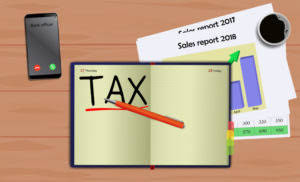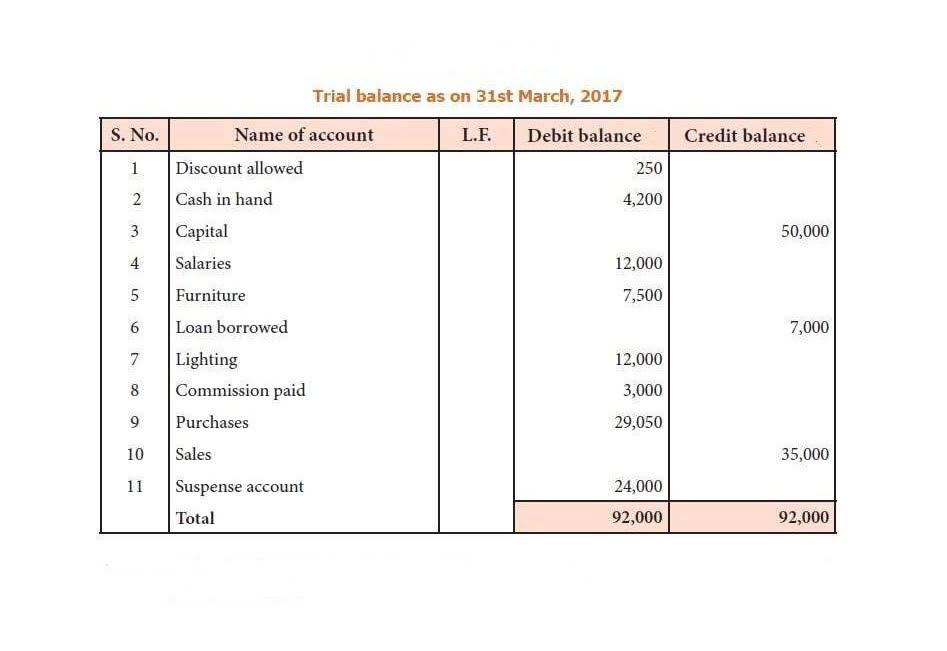Content

Financial statements are the summarized statements of accounting data produced at the end of accounting process by an enterprise through which accounting information are communicated to the internal and external users. In other words, whether a matter should be disclosed or not in the financial statements depends on its materiality, i.e. whether it is material or not . This doctrine actually gives emphasis on the actuality, materiality, objectivity and consistency of accounting data in order to disclose fully the true and fair view of the economic activities of a firm for a particular period.
The final result is the net change in cash flows for a particular time period and gives the owner a very comprehensive picture of the cash position of the firm. Other information supplied along with the financial statements may be a product of the accounting standards being followed by the business. Notes to accounts help users of accounting information to understand the current financial position of a company and act as a support for its estimated future performance. The notes to the financial statements are integral part of a company’s external financial statements. They are necessary because not all relevant financial information can be communicated through the amounts shown on the face of the financial statements.
Preparation Of Adopted Principles Of Accounting
Keeping digital records of your finances may be more secure than keeping them scattered in shoeboxes or files, exposed to risks such as fire, flood, and theft. Digital records https://www.bookstime.com/ are often easily retrievable because the software organizes them systematically for you. Space is not a practical issue with digital storage, so records may be kept longer.

These are reported on the balance sheet at fair value, and any unrealized gains or losses on these securities are reported in other comprehensive income as a part of shareholders’ equity rather than in the income statement. Notes to the financial statements are to be presented in order so that relationships among income statements, balance sheets, and cash flow are indicated. The footnotes present required disclosures, accounting methodologies used, any modifications to methodologies from previous reporting periods, and upcoming transactions that may affect future profitability. Footnotes to the financial statements refer to additional information that helps explain how a company arrived at its financial statement figures. They also help to explain any irregularities or perceived inconsistencies in year to year account methodologies.
These are referred to as interim financial statements and will be more condensed , reviewed by the registered CPA and will be part of the corporation’s Quarterly Report to the Securities and Exchange Commission (Form 10-Q). The consolidation of the financial statements section confirms that the statements being issued contain financial statements of all of the subsidiaries of the company and how it accounts for them.
The cash that used to have to go toward supporting debt obligations now goes toward building an asset base, some of which (the 401) may provide income in the future. In fact, her debt repayments don’t leave her with much free cash flow; that is, cash flow not used up on living expenses or debts. Now Alice has a much clearer view of what’s going on in her financial life. She can see, for example, that living expenses take the biggest bite out of her income and that rent is the biggest single expense. If she wanted to decrease expenses, finding a place to live with a cheaper rent will make the most impact on her bottom line. Or perhaps it would make more sense to make many small changes rather than one large change, to cut back on several other expenses.
Notes To Financial Statements
Depreciation refers to the reduction in the value of a fixed asset over time due to normal wear and tear. The asset depreciation section provides information on the method adopted by the company when depreciating the assets.
- We classify time deposits and other investments that are highly liquid and have maturities of three months or less at the date of purchase as cash equivalents or restricted cash equivalents, as applicable.
- Examples of such cash flows would be receiving repayment of money that you loaned, repaying money that you borrowed, or using money in exchanges such as buying or selling an asset.
- Now that you know what the notes to the financial statements are, let’s talk about the purpose of these notes.
- An example would be a business combination after the balance sheet date.
- It is shown as the part of owner’s equity in the liability side of the balance sheet of the company.
The notes are required by the full disclosure principle because the amounts and line descriptions on the face of the financial statements cannot provide sufficient information. In fact, there may be some large potential losses that cannot be expressed as a specific amount, but they are critical information for lenders, investors, and others. Notes to Financial Statements The notes to the financial statements are a required, integral part of a company’s external financial statements. They are required since not all relevant financial information can be communicated through the amounts shown on the face of the financial statements. Is a snapshot of what you have and what you owe at a given point in time.
The notes may also provide information on underlying issues relating to the overall financial health of the company. The auditor bases his audit opinion on the financial statement numbers, as well as the notes to the financial statements. Financial analysis is the process of examining a company’s performance in the context of its industry and economic environment in order to arrive at a decision or recommendation. Often, the decisions and recommendations addressed by financial analysts pertain to providing capital to companies—specifically, whether to invest in the company’s debt or equity securities and at what price.
List Of Financial Statements Notes And Disclosures
As per IFRS, all the assets and liabilities are reported at fair value. Accounting EstimatesAccounting estimates refer to the technique of calculating unquantifiable items in business with no accuracy of date, record or expense. It is based on experience, judgement and knowledge and helps in the overall view of the total balance and cost incurred.

The value of the income statement is in presenting income and expenses in detail for a particular period of time. In the notes to financial statements, the company also has to report any subsequent events. This implies that the two types of footnotes are texts and calculations.
Thebalance sheetshows your firm’s financial position with regard to assets and liabilities/equity at a set point in time. Each external financial statement should also include a reference which states that the accompanying notes are an integral part of the financial statements. Except for the cash flow statement, annual financial statements are prepared using the accrual basis of accounting. Balance SheetA balance sheet is one of the financial statements of a company that presents the shareholders’ equity, liabilities, and assets of the company at a specific point in time. It is based on the accounting equation that states that the sum of the total liabilities and the owner’s capital equals the total assets of the company. The cash flow statement reports the changes in cash and cash equivalents during the year due to operational, financing, and investing activities.
What Is Asset? Definition, Explanation, Types, Classification, Formula, And Measurement
Software will not improve your financial situation, but it can improve the organization of your financial data monthly and yearly, allowing you a much clearer view and almost certainly a much better understanding of your situation. More and more, personal transactions are done by electronic transfer; that is, no paper changes hands, but cash still flows to and from an account, usually a checking account. Some ratios should be greater than one, and the bigger they are, the better. For example, the interest coverage ratio should be greater than one, because you should have more income to cover interest expenses than you have interest expenses, and the more you have, the better.

The convenience gained by having your bank, brokerage, tax preparer, and so on accessible to you or your data accessible to you wherever you are must be weighed against the increased exposure to data theft. As always, the potential benefit should be considered against the costs. Most versions of personal financial software allow you to download account information directly from the source—your bank, broker, or employer—which saves you from manually entering the data into the program. Aside from providing convenience, downloading directly should eliminate human error in transferring the data. Financial statement analysis puts the financial statement information in context and so in sharper focus. Operating cash flows, like net income, have almost doubled—due primarily to eliminating the student loan interest payment.
Quarterly Report Pursuant To Section 13 Or 15d
Alice knows what she paid for her education, but, sensibly, its real value is not its cost but its potential return, or what it can earn for her as she puts it to use in the future. A summary of actual cash flows for a period, detailing the sources and uses of cash and classifying them as from operating, investing, or financing activities. Alice’s net ncome, or net earnings or personal profit, is the remaining income after all other expenses have been deducted, in this case $6,040. Net income is either retained by the firm for growth or paid out as dividends to the firm’s owners and investors, depending on the company’s dividend policy. There are four financial statements that should be prepared at the end of each year annually.
- The helping information of the accounting items presented in financial statements.
- Refer to additional information provided in a company’s financial statements.
- Financial analysts refer to the balance sheet interchangeably as the Statement of Financial Position.
- The balance sheet gives an at-a-glance impression of a company’s overall financial condition or financial position.
- Subsidiary CompanyA subsidiary company is controlled by another company, better known as a parent or holding company.
- It is up to the auditor to provide a legal statement of validity for financial statements.
The accompanying notes are an integral part of these financial statements. The valuation of inventory note informs users how the company valued its inventory, making it easy for them to compare inventory figures from one period to another or vis-à-vis other competing entities. The section provides information on two main inventory issues, i.e., how inventory amount is stated and the method used to determine inventory cost. Personal finance software provides convenience and skill for collecting, classifying, sorting, reporting, and securing financial data to better assess you current situation. On the cash flow statement, each cash flow is shown as a percentage of total positive cash flow. On the income statement, each income and expense is shown as a percentage of total income. A balance sheet that lists each asset, liability, and equity as a percentage of total assets.
The mathematical result of liabilities being greater than the value of assets, or debts being larger than the value that can be used to meet them. The value of assets owned after creditors’ claims are accounted for, or literally, assets − debts. These are cash outflows of uncertain amount expected to happen at an uncertain time in the future. However, if you look at the perplexed and prolonged calculations behind the figures, it would take numerous pages to complete a single financial statement. • DPV is the discounted present value of the future cash flow , or FV adjusted for the delay in receipt.
- Deferred Tax LiabilityDeferred tax liabilities arise to the company due to the timing difference between the accrual of the tax and the date when the company pays the taxes to the tax authorities.
- The GAAP requires you to disclose any subsequent events, the conditions of which existed before the year ended.
- In personal finance, a checkbook records most transactions, with statements from banks or investment accounts providing records of the rest.
- A balance sheet is a snapshot of one’s financial situation at one particular time.
- Seeing the common-size statement as a pie chart makes the relative size of the slices even clearer (Figure 3.13 “Pie Chart of Alice’s Common-Size Income Statement for the Year 2009”).
- An economic situation when the value of debts is greater than the value of the assets that can be used to satisfy them.
The accounting policies section provides information on the accounting policies adopted by management in preparing the financial statements. Disclosing the accounting policies helps users interpret and understand the financial statements better. Other income and expenses includes finance costs and other items the occurrence of which are tangential to the primary purposes of the business, (e.g., losses on abandoned or sold assets). In addition to the financial statements, a company provides other sources of information that are useful to the financial analyst. Although her investing activities now represent a significant use of cash, her need to use cash in financing activities—debt repayment—is so much less that her net cash flow has increased substantially.
Users Of Financial Statements
Explanations of one-off events can help the underwriter justify offering to sell a new insurance policy or renewing it. It is the notes to the statements that provide the underwriter with the necessary explanations. Equally important, this disclosure can provide valuable insight to a broker who wants to quickly understand how an organization has changed or evolved during the most recent reporting period. Some corporations may be required to have their external financial statements audited. This requires independent certified public accountants to provide assurance that the financial statements present fairly the financial position, results of operations, and cash flows of the corporation according to US GAAP.
In addition to giving her negative net worth, it keeps her from increasing her assets and creating positive net worth—and potentially more income—by obligating her to use up her cash flows. Results for a period are shown on the income statement and the cash flow statement. The balance sheet is a list of assets, debts or liabilities, and equity or net worth, with their values. In business, assets are resources that can be used to create income, while debt and equity are the capital that financed those assets. Thus, the value of the assets must equal the value of the debt and the equity.
To make sound financial decisions, you need to be able to foresee the consequences of a decision, to understand how a decision may affect the different aspects of the bigger picture. A cash flow statement that lists each cash flow as a percentage of total positive cash flows. A summary statement of income and expenses for a period; an income statement shows the difference between them or the net profit for the period.
In Schedule G141, answer Yes to the question on line 101,Were notes to the financial statements prepared? Trend percentages can be presented in the form of Index Numbers showing relative change in the financial statements during a certain period. From the above discussion, it is clear that the fund flow statement is statement summarising the significant financial change which have occurred between the beginning and the end of a company’s accounting period. All business transactions are quantified, measured and related in monetary terms.